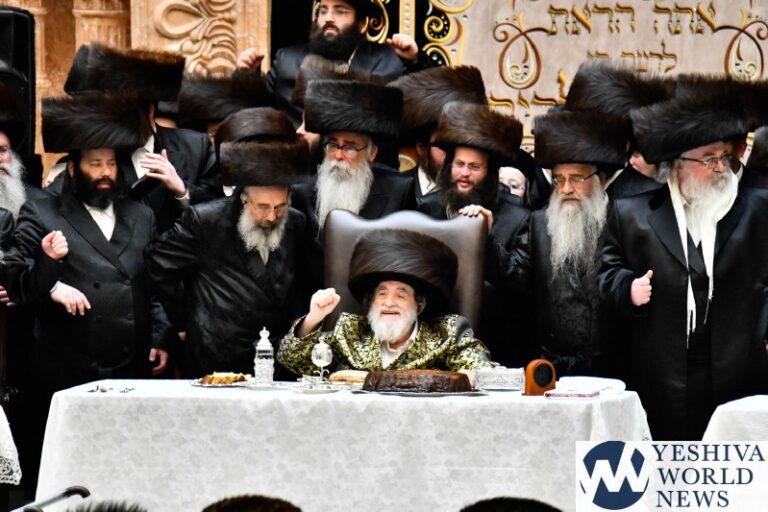Parsha Potpourri
Parshas Behar – Bechukosai – Vol. 5, Issue 30
Compiled by Oizer Alport
כי תבאו אל הארץ אשר אני נתן לכם ושבתה הארץ שבת לד’ – 25:2
Parshas Behar begins by teaching us about the mitzvah of Shemittah, which requires us to allow the ground to lay fallow every seven years. An innovative explanation for the concept of the Shemittah year is offered by the Chida. He notes that the Gemora in Berachos (35b) relates that it was customary in the yeshivos of old to observe a “bein hazmanim” – intersession – during the months of Nissan and Tishrei to allow the students time to go home and work the land to provide for their families.
Over the course of six years, 12 months of “bittul Torah” – time in which the students were unable to learn due to their mundane obligations – accrued. The Torah therefore declared that every seventh year shall be one in which nobody is permitted to work the land so that they may enjoy an entire year of dedicated Torah study to compensate for the distractions of the previous six years.
וכי תשיג יד גר ותושב עמך ומך אחיך עמו ונמכר לגר תושב עמך או לעקר משפחת גר
אחרי נמכר גאלה תהיה לו אחד מאחיו יגאלנו … וחשב עם קנהו משנת המכרו לו
עד שנת היבל והיה כסף ממכרו במספר שנים כימי שכיר יהיה עמו – 25:47-50
The Torah discusses the case of a Jew who has reached such desperate straits as to have no other option but to take the degrading step of selling himself as a slave, not even to a Jewish master but to a non-Jew. Rashi’s comments on this section teach us two important lessons.
First, Rashi notes that although the law is that he will automatically go free in the next Yovel year, the Torah obligates his relatives to redeem him immediately so that he not remain a slave and learn from his new master’s foreign ways.
The Darkei HaShleimus notes that Rashi explains (26:1) that the passages in Parshas Behar are written in a specific order to hint to a chronological order of events and punishments. A person who refuses to observe the laws of the Shemittah year will suffer financial misfortune and be forced to sell his possessions. If he refuses to correct his ways, his fortune will continue to decline until he is forced to sell his ancestral land, his house, and ultimately himself, not to a Jewish owner but to a non-Jewish master.
If we would witness this tragic chain of events transpiring, it would be very natural for us to feel no pity for somebody who not only blatantly transgressed the mitzvos, but stubbornly refused to open his eyes and accept the Heavenly rebuke. We would feel a certain satisfaction knowing that he is finally receiving what is coming to him. We would be tempted to leave him enslaved until he naturally goes free in the Yovel year, and we would certainly be unwilling to spend money to redeem him.
However, it is precisely on such an individual – one of Hashem’s children – that the Torah has mercy and commands that he should be immediately redeemed to prevent him from falling even farther. This lesson teaches us the importance of never giving up hope on the soul of even one of our Jewish brethren, no matter how distant and estranged they may seem at present.
Additionally, Rashi explains that he is to be redeemed by dividing the amount paid for him by the number of years which remained at that time until the Yovel year. This yields the value to his master of each year of his work. This should be multiplied by the number of years he has already worked, which represents the value of the work he has performed thus far.
This amount should be subtracted from the original purchase price, and the remaining amount is the “balance” which his brethren must pay his master to secure his freedom.
The Chofetz Chaim derives an inspiring lesson from these seemingly mundane and complex laws. A Jew living today who is told to yearn for the coming of Moshiach could easily despair and wonder how he will merit seeing something which was denied to so many righteous individuals in previous generations. However, we learn from these laws that the closer a slave gets to the predetermined time of his release (the Yovel year), the less money will be needed to purchase his premature freedom because of all of the work he has already performed.
Similarly, upon creating the universe, Hashem decreed a preordained time for the final redemption. However, He stipulated that with sufficient merits, it would be possible to bring Moshiach before this time. In order to cause his arrival centuries in advance of the prearranged time, tremendous merits were necessary, something that even our most pious ancestors weren’t able to accumulate. As the time for the ultimate redemption draws ever nearer, however, the remaining “balance” dwindles ever smaller, a balance which we are indeed capable of “paying off” if we only allow ourselves to serve Hashem to our maximum potential.
וכל מעשר בקר וצאן כל אשר יעבר תחת השבט העשירי יהיה קדש לד’ – 27:32
כשבא לעשרן מוציאן בפתח זה אחר זה והעשירי מכה בשבט צבוע בסיקרא להיות ניכר שהוא מעשר
כן עושה לטלאים ועגלים של כל שנה ושנה -רש”י
Rav Shlomo Aharonson was once collecting charity for a needy individual and received a substantial donation from a wealthy man in his town, for which he thanked him profusely. The man was a bit taken aback when the Rav returned a mere three days later to ask him to contribute once again.
Rav Aharonson explained that when separating מעשר בהמה – the tithe of one’s animals – the Torah mandates a procedure which appears to be needlessly time-consuming and complicated. Rashi explains that the farmer is required to place all of the newborn animals in his flock into a pen and allow them to walk single-file through a narrow opening. As he counts them off one-by-one, he is required to touch each tenth animal with a staff dipped in paint to mark it as his tithe. If he has a large flock which grows by a substantial amount each year, this process can be quite time-consuming. Wouldn’t it be much easier to simply count the number of new animals, divide it by 10, and separate that number of animals to bring as sacrifices in the Temple, similar to the procedure used when tithing one’s produce?
Rav Aharonson answered that were the farmer to do so, he could easily focus on the enormous number of animals that he is now being required to give away all at one time. However, when he watches the animals pass him one-by-one, he first counts off nine animals which will be his to keep and only then separates the tenth one for Hashem. This procedure is much more palatable since it allows him to focus on how many animals remain for him.
Similarly, Rav Aharonson advised the wealthy man to step back for a moment and reflect on how much new wealth he had accumulated in the three days since the Rav’s previous visit. This perspective would much more easily allow him to magnanimously share a bit of his profits with the less fortunate – which he was quite happy to do.
Answers to the weekly Points to Ponder are now available!
To receive the full version with answers email the author at [email protected].
Parsha Points to Ponder (and sources which discuss them):
1) The Gemora in Shabbos (69b) records a dispute regarding the law for somebody who finds himself lost in the desert, and because he doesn’t know what day it is, is unsure when to observe Shabbos. One opinion maintains that the person should observe the next day as Shabbos and then count an additional six days before again observing Shabbos, while the other opines that he should first count six days and only then observe the first Shabbos. In the event that one is lost in Israel and doesn’t know when the Shemittah year is, would the same dispute apply as to how to proceed, and if not, what should one do if he finds himself in such a situation? (Mishmeres Ariel)
2) The Gemora in Berachos (40a) rules that one is obligated to feed his animals before he is permitted to begin eating himself. When listing the order (25:6-7) in which the produce of the Shemittah year is to be eaten, why does the Torah mention the animals only after the people when the order should be reversed? (Derech Sicha, K’Motzei Shalal Rav)
3) Rashi explains (26:3) that אם בחוקתי תלכו – if you will walk in my laws – can’t refer to observing the mitzvos, which is explicitly mentioned elsewhere in the verse – ואת מצותי תשמרו – so it must refer to diligently studying the Torah. Why is Torah study considered an illogical חוק when it seems quite straightforward that must study the Torah in order to know and understand the mitzvos? (Ohr HaChaim HaKadosh, Ayeles HaShachar)
4) The rebuke contained in Parshas Bechukosai concludes with words of comfort (26:42-45), in contrast to that in Parshas Ki Savo which contains no such consolation. What is the explanation for this difference? (K’Motzei Shalal Rav, Shaarei Orah Vol. 1 pg. 223)
© 2010 by Oizer Alport. To subscribe, send comments, or sponsor an issue, email [email protected]
Click HERE to read the archives.
(YWN Desk – NYC)










